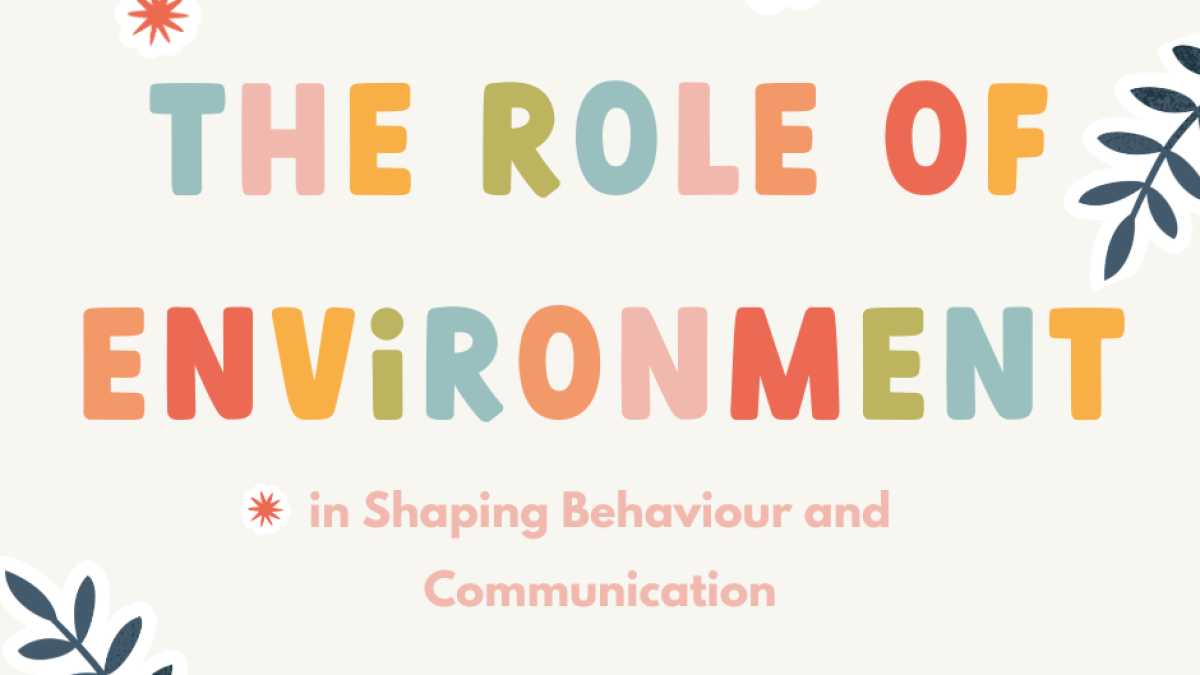The Role of Environment in Shaping Behaviour and Communication

Creating a calm, engaging home environment can greatly improve a child's behavior and communication, especially for late talkers.
Creating the right environment at home can have a significant influence on a child's behaviour and communication development, especially for late talkers. Various factors, including noise levels, lighting, family dynamics, and transitions, can impact how a child interacts and expresses themselves. By understanding these influences and making small adjustments, parents can foster an environment that encourages positive behaviours and supports communication in their child.
How Environment Influences Behaviour and Communication
- Noise Levels A noisy environment can overwhelm children, making it difficult for them to focus on communication or follow conversations. High levels of background noise, such as constant television, loud music, or ongoing conversations, may create distractions and lead to frustration in children who are still developing their language skills.
Tip: Designate quiet times during the day where distractions are minimised. Turning off the TV or reducing background noise during meals or playtime can create a more focused atmosphere for communication.
- Lighting Lighting plays a subtle but essential role in a child’s mood and engagement. Bright, harsh lighting can overstimulate some children, while dim or inadequate lighting can make it harder for them to connect visually, which is key in communication.
Tip: Use soft, natural lighting where possible. Dimmable lights or lamps can create a calm, inviting space that allows your child to feel more comfortable and engaged during interactions.
- Family Dynamics and Interactions Family dynamics can deeply influence a child's communication development. A home environment where conversations are rushed or there is little face-to-face interaction may leave late talkers feeling overlooked. Children learn best through observation and interaction, so a household that promotes patient, calm exchanges encourages them to join in.
Tip: Make time for meaningful, uninterrupted interactions with your child. Turn routine moments, such as mealtime or bedtime, into opportunities for one-on-one communication, allowing them to express themselves at their own pace.
- Transitions and Routines Transitions, such as moving from one activity to another or changes in daily routine, can be challenging for late talkers. These shifts can trigger anxiety, leading to frustration or withdrawn behaviour, which can impact their willingness to communicate.
Tip: Use visual aids, like picture schedules, or simple verbal cues to help your child anticipate transitions. Giving them time to adjust and explaining changes calmly can reduce anxiety and support smoother communication during transitions.
Setting Up Your Home to Support Late Talkers
Creating a supportive environment for your child doesn't require drastic changes. By paying attention to key elements in your home, you can help your late talker feel more secure and open to communicating.
- Create a Calm Space: Dedicate a quiet, comfortable area in the house where your child can play, read, or engage in focused activities without distractions.
- Encourage Face-to-Face Interaction: Sit down to your child’s level during conversations, maintaining eye contact and using gestures to support verbal communication.
- Slow Down: Give your child time to respond during interactions. Don’t rush through conversations—letting them take their time to process information can reduce frustration.
- Use Positive Reinforcement: Encourage your child's efforts to communicate, even if it's non-verbal, with praise or by expanding on their gestures. This builds confidence and motivates further attempts at communication.
Final Thoughts
The environment your child is exposed to can either support or hinder their behavioural and communication development. By making thoughtful adjustments in areas such as noise, lighting, and family interactions, and by recognising the potential stress of transitions, you can create a nurturing space that fosters both positive behaviours and communication. These small changes can make a big difference in your late talker’s progress, helping them feel more comfortable, understood, and encouraged in their journey towards effective communication.
 Joanne Jones
Joanne Jones 